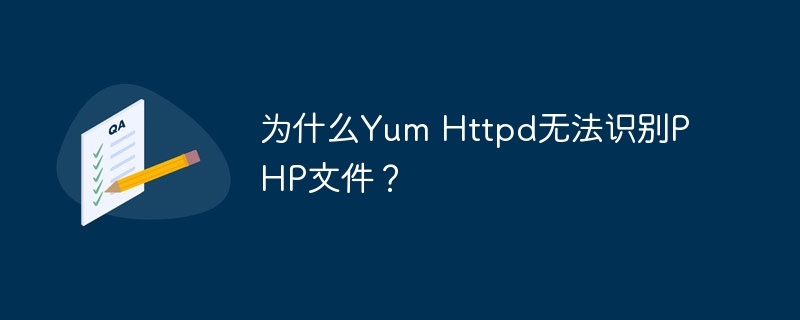

Tools such as Yum, Httpd and PHP are often used when building websites, but sometimes you encounter a problem, that is, the Httpd installed by Yum cannot recognize PHP files. This problem may cause the website to not function properly, so it is important to understand the cause of this problem and how to solve it.
First of all, let’s understand why Yum Httpd cannot recognize PHP files. In the process of building a website, we usually choose to use Apache as the web server, and Httpd is actually a name for Apache. PHP is a server-side scripting language used to develop dynamic web pages. When a web server does not recognize a PHP file, it is usually due to a missing PHP module. Because Httpd does not come with PHP functions, you need to install the PHP module to parse and execute PHP files. If the PHP module is not installed, Httpd will not be able to recognize PHP files and therefore will not be able to execute PHP code correctly.
Now let’s take a look at how to solve the problem that Yum Httpd cannot recognize PHP files through specific code examples. First, we need to make sure that Httpd and PHP are installed. If not installed, you can use Yum to install it:
sudo yum install httpd sudo yum install php php-mysql
After the installation is complete, we need to start Httpd:
sudo systemctl start httpd
Next, we need to edit Httpd The configuration file httpd.conf adds recognition and processing of PHP files. Find the httpd.conf file and open it with an editor. Find the following content in the file:
<IfModule dir_module>
DirectoryIndex index.html
</IfModule>Add the following configuration at this location to tell Httpd to parse the .php file:
<FilesMatch .php$>
SetHandler application/x-httpd-php
</FilesMatch>Save and exit Editor, and then restart the Httpd server:
sudo systemctl restart httpd
In this way, Httpd is configured to recognize PHP files. Next, you can write a simple PHP file to test whether the problem has been solved. Create a new test.php file with the following content:
<?php phpinfo(); ?>
Put the test.php file in the root directory of the website (usually /var/www/html/), and then access the file in the browser. If If you can see the PHP information page, it means that the problem has been solved and Httpd can correctly identify the PHP file and execute the code in it.
In general, the problem that Yum Httpd cannot recognize PHP files is usually caused by the lack of PHP modules. By installing the PHP module and configuring the relevant settings of Httpd, we can easily solve this problem. I hope this article can help readers who encounter similar problems so that they can successfully set up and run their own websites.
The above is the detailed content of Why doesn't Yum Httpd recognize PHP files?. For more information, please follow other related articles on the PHP Chinese website!